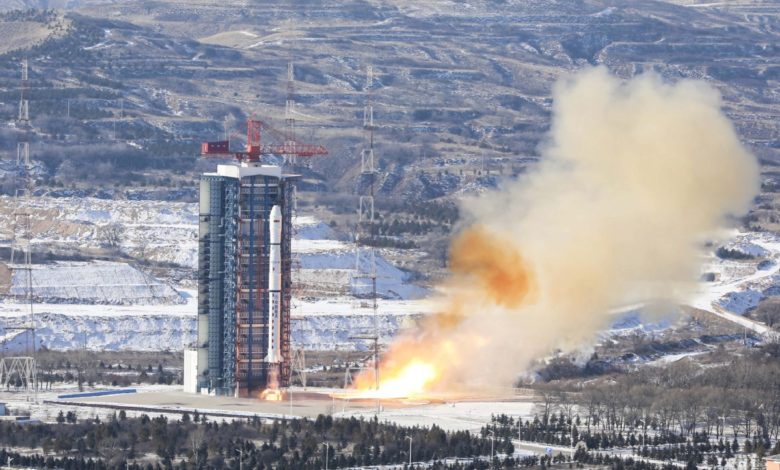
U.S. imperialism is reviving a space race of sorts to accompany its new Cold War-style geopolitical footing with regard to China, Russia and other emerging economic powers. However, much like the new Cold War is based on fundamentally different geo-strategic principles than the first iteration, the new space race differs from the competition between the United States and Soviet Union during the 1950s, 60s and 70s in several key ways.
First and foremost, the military and economic components of the new space race are being openly and freely discussed in the media and trade publications, not exclusively glossed over with universalist discourse about science and exploration as was standard in the 60s and 70s. It can be easy to write off talk of moon bases, starships and interplanetary corporations as science fiction and a distraction from tangible, earthly concerns, but there are serious economic, political, and strategic concerns playing out in space.
This can be seen in the headlines coming from mainstream media. Recently, Forbes published an opinion piece entitled, “America’s Space Systems Should Be Officially Prioritized As ‘Critical’ U.S. Infrastructure,” SpaceNews, an industry magazine reflected on “Five ways war in Ukraine is transforming the space domain,” and the Washington Post, a vociferously anti-China voice egging on the new Cold War, regularly issues alarmist articles like “China’s military aims to launch 13,000 satellites to rival Elon Musk’s Starlink.”
Understanding the ‘space domain‘
There are several key areas under intense scrutiny by governments and militaries the world over, and it is stated U.S. military policy to pursue “full spectrum dominance” across the five domains of land, sea, air, space and cyberspace. In this context, first and foremost this means the ability to freely move equipment and personnel off planet and to operate in Low Earth Orbit, which extends to 2,000 kilometers above the surface of the earth.
This zone is where most space stations and satellites operate. It is becoming increasingly crowded as more infrastructure is installed in LEO. Most notably contributing to this crowding are vast networks of tens of thousands of tiny satellites that form the backbone of satellite internet providers such as SpaceX’s Starlink program.
Starlink has made the news repeatedly over the past year for its usage by the Ukrainian military and by Iranian opposition forces to circumnavigate internet censors. Clearly aligned with U.S. imperialist interests, these actions by SpaceX have prompted Russia to consider Starlink satellites as military targets.
The risk of hot war in LEO has the potential for immense destruction, as destroyed satellites will create dangerous debris fields that could potentially cause a cascade effect destroying much of the other infrastructure in LEO, from crewed space stations to communications and imaging satellites used for a variety of civilian purposes. As more countries become reliant on space based infrastructure, the risk posed by conflict in LEO and the subsequent cascade, known as Kessler Syndrome, becomes exponentially greater.
A cislunar economic zone?
Beyond Low Earth Orbit, there is also much focus on the region between earth and the moon, known as cislunar space, and the surface of the moon itself. Much of the media attention has been on the recent announcement of the crew of next year’s Artemis II mission, which will send four astronauts around the moon to prepare for a crewed landing later this decade. Part of this was SpaceX’s super heavy Starship, which self-destructed in a spectacular explosion during its launch on April 20. The Starship itself is a key component of the lunar landing plans for Artemis III, currently scheduled for 2025, though this recent failure casts doubts on the realism of that timeline.
While the U.S. and NASA are pushing hard to rekindle some of the nostalgia of the Apollo era, proudly proclaiming that they will be putting the first woman and first person of color on the surface of the moon, there is much more at stake than an astronomically expensive propaganda win.
The potential value of a cislunar economy has been estimated at $10 trillion. On the one hand, the United States is maneuvering to secure this space for its own multinational corporations and closest allies via the Artemis Accords. On the other hand, Russia and China have committed to building a joint International Lunar Research Station in the 2030s, and the speculative timeline for a Chinese crewed lunar landing is accelerating, with some analysts predicting an attempt before the end of the decade.
China is leading the world in South-South cooperation in space. Recently, Venezuela’s Bolivarian Agency for Space Activities was brought onto the International Lunar Research Station team. Brazil and China have collaborated on half a dozen satellites dedicated to agricultural and ecological monitoring and data collection, and similar projects have been undertaken across the African continent. The United States sees these moves toward cooperation, technology exchange, and peaceful development across the Global South as a threat to its current monopoly on space activities.
Potential for people-centric space development
There is much to be critical of concerning the expansion of capital in space. The privatization of off-planet resources, the escalation of imperialist war to Low Earth Orbit and beyond, the dangerous cluttering of earth’s orbit with debris, the devastating environmental impact of rocket launches, and the waste of resources on the vanity projects of billionaires are all serious concerns, but there is also strong potential for revolutionary, people-centric technical and scientific developments in this moment.
Development and continued modernization for countries breaking free of neocolonial domination in the 21st century requires access to and the development of space infrastructure. Besides the big three space powers — the United States, China and Russia — governments in India, Iran, the United Arab Emirates, Canada, the European Union and others are investing in space programs. The last decade has also seen the proliferation of numerous private space companies, mostly dedicated to launch vehicles and LEO infrastructure.
For example, instead of countless countries and corporations flooding Low Earth Orbit with satellite internet constellations and making profit off of proprietary usage and cluttering space with redundant equipment, a similar constellation maintained as an international public utility could deliver high speed internet to every corner of the planet without the need for difficult installation of ground infrastructure.






